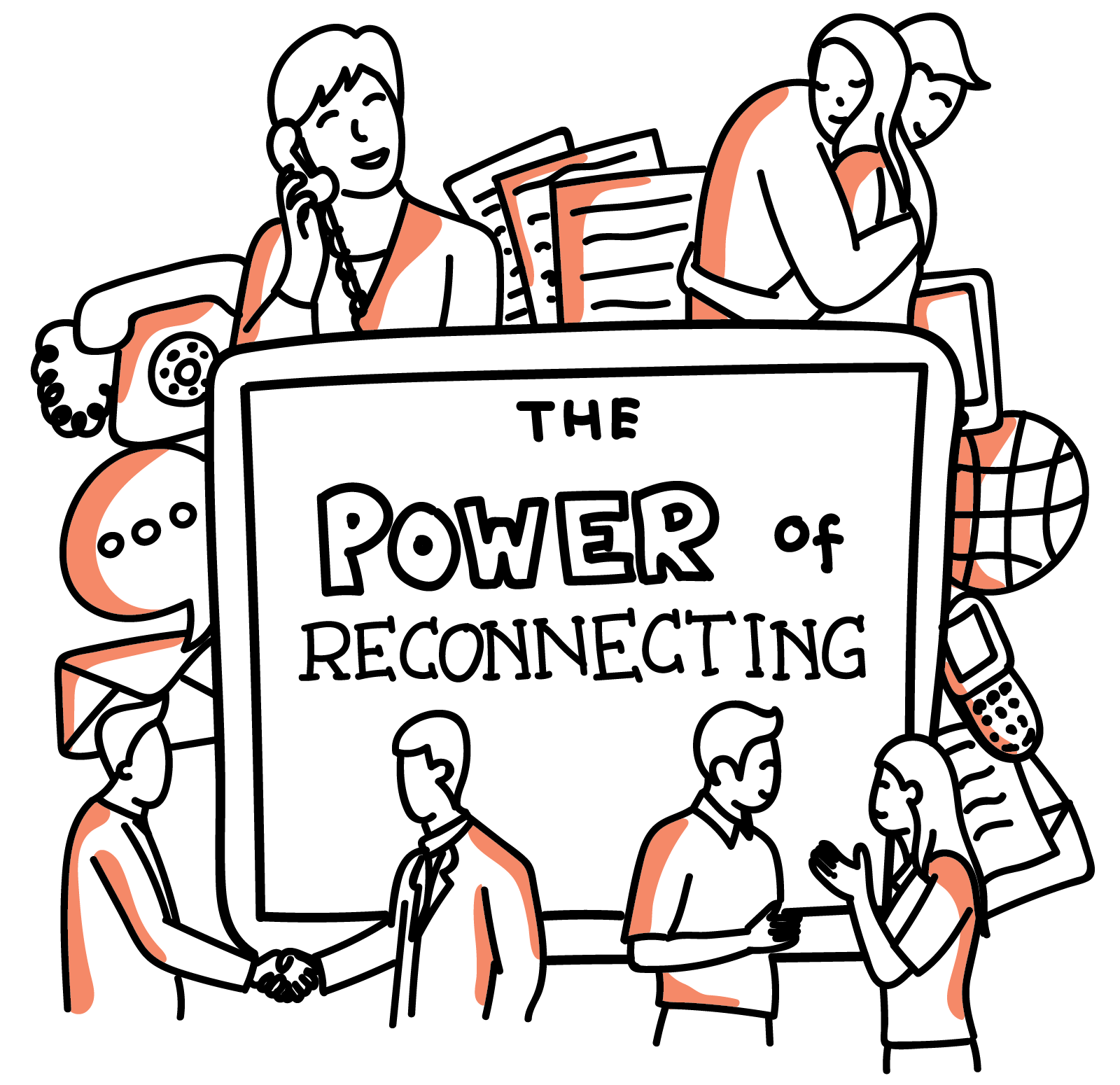The Power of Reconnecting
Your existing network is full of untapped value.
Is there someone you’ve lost touch with and miss? Reconnecting -- with old friends, acquaintances you haven’t seen in years, and colleagues you have lost touch with -- is one of the most effective ways to make the most of your network.
Research by professors at Rutgers, George Washington, and Northwestern have found that advice from friends and colleagues you have not seen in three years or more can be better than that advice from your current co-workers. (See: Dormant Ties: The Value Of Reconnecting & The Power of Reconnection — How Dormant Ties Can Surprise You from Levin, Walter, and Murnighan)
“In my own teaching, I routinely see reconnections lead to job offers and surprising opportunities. And, perhaps more importantly, it helps create mutual feelings of belonging and rekindles trust.”
Feeling nervous or uncertain about reaching out to people you haven’t spoken to for years? You’re not alone.
Many people are resistant. It can feel awkward. But imagine how you would feel if an old friend reached out to you. More likely than not, reconnecting would be a pleasant surprise and a welcome opportunity to be of help.
Let us help you stay accountable…
How does it work?
Step 1: Who
Grab a piece of paper and write down a list of at least 10 people who you have lost touch with (i.e., you have not spoken in at least a few years). It may be helpful to open up your friends list on social media and scroll through your connections.
People are not always great at deciding who might provide the most helpful emotional or practical support, so maybe choose a few at random. If it helps, we’ll pick one for you -- how about the closest to the bottom of your list that you have not picked already.
Step 2: Reconnect
Contact at least 4 of them. Depending on your comfort level, it could be via email or a quick phone call:
Three approaches that work well for reaching out--Give, Thank, or Ask:
Send along an article you recently saw that they might be interested in or a book recommendation. Giving is one of the best ways to reconnect.
Thank them for advice or support they provided in the past that still has an effect on your life.
Just ask! If you want to ask someone for advice or help, reams of research show that people dramatically underestimate how likely someone is to want to help. All you need to do is ask. Here is some advice for asking for help:Time box it: Can I have 15 minutes?Why are you reaching out: Be transparent, but let them know how they can make a difference.Why are you reaching out to them: What value will you get out of the questions you ask? What do you like about this person? Be specific.
Use your judgment, your email to an old best friend should look different than an email to a former co-worker you spoke to irregularly.
Step 3: Continue the Conversation
If it makes sense, continue the conversation either on the phone or in person. Worried about what to say? Here are a few tips (detailed advice is beyond the scope of this project).
Ask open-ended questions instead of yes & no questions. (Think: “Why did you…” & “How did you…”)
Give people time to continue talking. Pauses are ok.
The most powerful question is the follow-up question, according to a research team at Harvard. It shows you are listening and interested. (See: It Doesn’t Hurt to Ask: Question-Asking Increases Liking from Huang, Yeomans, Brooks, Minson, and Gino)
Step 4: Follow-up
Follow-up. It is in the follow-up where most of the magic usually happens.
Don’t underestimate the power of a simple thanks. If you have something concrete to thank your contact for, thank them. Work by Adam Grant at Wharton and Francesca Gino at Harvard found that appreciation and the simple words ‘thank you’ were enough to increase workers' efforts by +50% and also made them more likely to help someone else who needed it. (See: The Big Benefits of a Little Thanks and A Little Thanks Goes a Long Way: Explaining Why Gratitude Expressions Motivate Prosocial Behavior from Grant & Gino)
Step 5: Share your story and give back
Help us begin a positive chain of reconnection and give back at the same time. If you found reconnecting helpful, consider passing along this site to the contact and sharing it with five other people who might benefit along with a brief note about your experience. It is another opportunity to amplify the power of reconnecting.
Reconnecting isn’t easy, share your experience with us and others in the comment section on this page.
If you have a good experience, know that you can go much deeper into your network of Dormant Ties than just the first few you pick. According to work published in the same paper from Levin, Walter & Murnighan, executives found their 10th choice tie was as helpful as their first.
Let us help you stay accountable…
